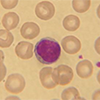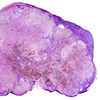Heparin Induced Thrombocytopenia Screen (HIT)
Specimen Volume
6 mL plain red top serum (no gel)Specimen Transport
Standard transport to laboratory - State for the attention of Special Coagulation on request formTurnaround Time
7 days (Unless urgent by prior arrangement with laboratory)Sample Processing In Laboratory
Sample should be centrifugedSample Stability
12 hours from venepuncture (ideally received no later than 4 hours after collection)General Information
External Requests:
Note: For external requests please click Here for Coagulation Disorders request form. Please complete all information fully.
Sample packing and transportation:
Frozen serum should be sent on dry ice using an insulated container to ensure that it remains frozen during transport. Please refer to the preanalytical variables section of the BSH guidelines on the laboratory aspects of assays used in haemostasis and thrombosis1.
As an alternative the bio-freeze container system can be used to ensure samples remain frozen in transit. These have been locally validated to maintain samples at -20oC for up to 12 hours providing they have been preconditioned in a -80oC freezer for 24 hours prior to use.
Address:
Transport containers should be specifically labelled to ensure they are delivered to the correct location:
Special Coagulation, Haematology Laboratory, Clinical Laboratory Services, Level -1, Queen Elizabeth Hospital Birmingham, Mindelsohn Way, Edgbaston, Birmingham, B15 2GW.
Disclaimer:
Please note failure to use an appropriate transit container may affect sample integrity, thus the accuracy of results cannot be guaranteed. Furthermore, samples packaged incorrectly that arrive in a thawed state cannot be tested.
Please contact the laboratory on 0121 371 5988 (Queen Elizabeth Hospital) if you require any further information.
1) Baker, P., Platton, S., Gibson, C., Gray, E., Jennings, I., Murphy, P., Laffan, M. and British Society for Haematology, Haemostasis and Thrombosis Task Force (2020), Guidelines on the laboratory aspects of assays used in haemostasis and thrombosis. Br. J. Haematol., 191: 347-362.
https://doi.org/10.1111/bjh.16776
Samples that meet the following criteria will not be processed:
- Haemolysed, clotted, underfilled or overfilled samples.
- Samples >12 hours old from the time of collection.
- Samples received from other hospital laboratories that have been frozen and thawed.
- Samples which fail the minimum data set.
Samples that meet the following criteria will not be processed:
- Samples >12 hours old from the time of collection.
- Samples received from other hospital laboratories that have been frozen and thawed.
- Samples which fail the minimum data set.
Assay limitations:
- The presence of immune complexes or other immunoglobulin aggregates in the patient sample may cause an increased non-specific binding and produce false-positives in this assay.
- The results of this assay should not be used as the sole basis for a clinical decision.
- Some low titre, low avidity antibodies may not be detected.
- The PF4:PVS complexes used in this assay may differ slightly from those created by PF4:heparin. Therefore, it is possible that some antibodies could react with PVS complexes that do not react with heparin complexes and vice versa.
- The detection of heparin-associated antibodies does not on its own confirm the diagnosis of HIT.
- Some patients may have naturally occurring antibodies to PF4.
Please note samples MUST be collected into a plain red top tube. Tubes containing serum separator gel are NOT suitable.
For more information please see https://labtestsonline.org.uk/tests/heparin-induced-thrombocytopenia-antibody
Notes
All requests for HIT screening must be approved by a Haematology Consultant
Reference Range
Reference Ranges are dependent upon methodology:
ACUSTAR (primary method): 0-0.99 U/ml. HIT cannot be excluded for results => 1.0 U/ml
HIT ELISA (secondary method, used for VITT cases): >0.4-1.0 weak positive, >1.0 Positive
Specifications
- EQA Status: NEQAS / ECAT
- EQAS Scheme: Yes








